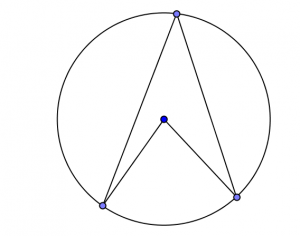I recently read a blogpost by one of my favorite authors, Brene Brown, of TED talk fame, and the author of a great book about vulnerability called Daring Greatly. In her blogpost Brene wrote about some reactions to a comment she made on Oprah Winfrey’s Super Soul Sunday show where she talked about shame in schools about which she received a great deal of criticism in the blogosphere and on twitter.
I kept reading as I was shocked that anyone would be offended by anything that Brene Brown could say – especially teachers. She has always been extremely inspiring and very supportive of teachers – as a teacher herself, her book, Daring Greatly, has a whole chapter on how schools can support a community to come together around vulnerability and become closer and foster creativity and innovation in this way.
However, she talks about the research that she has done about learning and teaching. She says,
“As a researcher, I do believe that shame is present in every school and in every classroom. As long as people are hardwired for connection, the fear of disconnection (aka shame) will always be a reality. ..Based on my work, I do believe that shame is still one of the most popular classroom management tools.”
Think about it. When you talk to adults about their memories of school, and specifically math classrooms, many people will tell stories of being embarrassed or humiliated about getting something wrong, about feeling less than adequate or unworthy of being in the class they were in. Even if the teacher was not doing anything deliberate, if a student has the courage to answer a teacher initiated question and get it wrong, the response that is given can make or break their self-worth that day.
I’ve been giving this a lot of thought in the context of the PBL Classroom – How are we supposed to be teaching students how to take risks and not be afraid to be wrong and make mistakes in their learning if they have this fear of shame that is so deeply entrenched in our culture? Especially in mathematics classrooms, how are we supposed to undo so many negative experiences that may have affected a student’s ability to allow themselves to be vulnerable and learn in this way?
PBL relies on the fact that a student is willing and able to make connections and conjecture regularly – numerous times in a class and on their own during “homework” time. Being wrong and uncertain is really the norm and not the anomaly in this classroom. As October rolls around and I hear more from students (and parents) about the discomfort they are feeling, I really do understand how different this is for everyone. However, I do think we need to rely on the fact that students can be resilient and strong when pushed to try new things and to learn in a way that is good for them. It is just that resilience that will make them better leaders, learners and more creative in the work force later on in life.
In talking to some students recently, I asked them where they thought they would learn more, in a classroom where it was laid out for them what they had to do or where they had to make choices about methods and sometimes it would be unclear. I could tell that one girl was really struggling with that question. She knew that it would be easier in the other classroom, but also knew that she would learn more and wanted to stay where her learning would be more effective.
What can I do to help this process go more smoothly? Make sure that they know that I am working hard NOT to use shame as a classroom management tool. That I am sincerely interested in the mistakes that they are making and how it is helping their learning. I want them to grow from their errors and misconceptions and find ways to use those to their advantage. I want to add to their self-worth not only as a math student, but as a problem solver in every way.
As Brene Brown says:
“I don’t believe shame-free exists but I do believe shame-resilience exists and that there are teachers creating worthiness-validating, daring classrooms every single today.”
I can be truly aware of the language that I use and the questions that I ask in order to make sure that everyone’s voice is heard and that my students know that I want to hear their ideas. It’s really the only way to get them to Dare Greatly!
PS – Check out the wonderful quote by Teddy Roosevelt that I use in my PBL classes about Daring Greatly that Brene Brown used for the title of her book.




